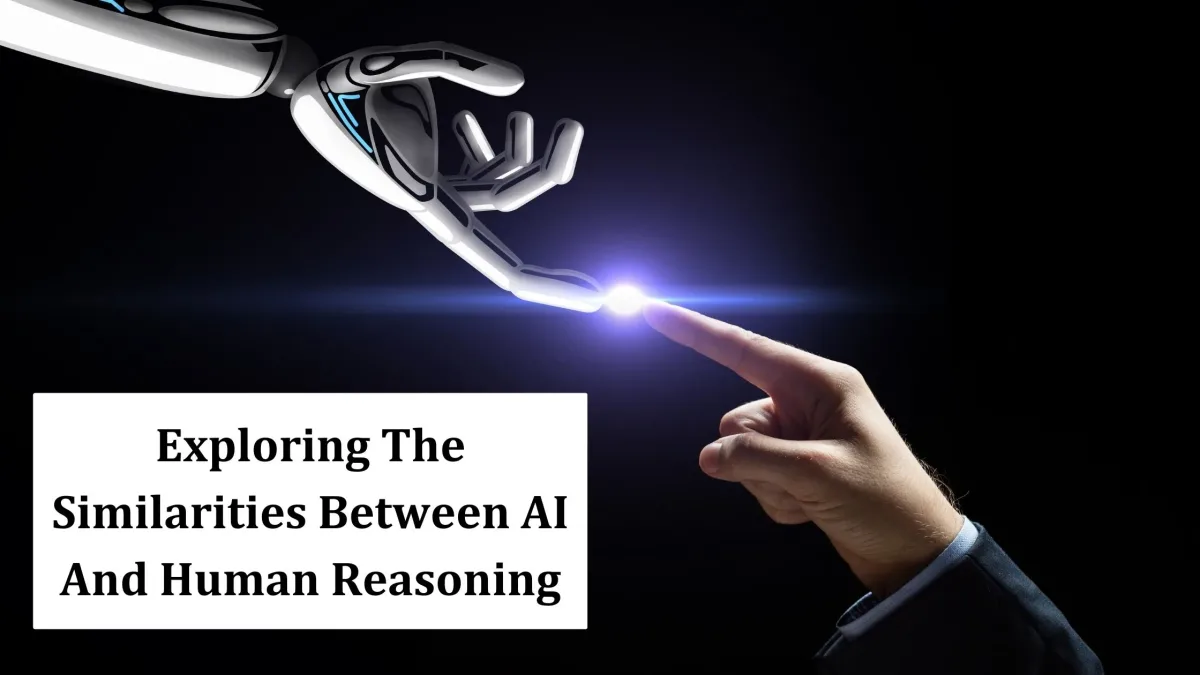Both AI and human reasoning excel at recognizing patterns, an essential aspect..
Exploring The Similarities Between AI And Human Reasoning

In our rapidly advancing technological landscape, artificial intelligence (AI) has become an integral part of our daily lives.
As we witness the capabilities of AI systems evolving, it sparks a compelling question: How closely does AI reasoning align with the intricate processes of human thought?
Unraveling the Threads of AI Logic
Artificial intelligence depends on sophisticated algorithms and models to process data, make decisions, and learn from experiences.
Much like the human brain, AI systems employ logic, pattern recognition, and problem-solving strategies.
Understanding the fundamental parallels between these two realms sheds light on the remarkable convergence of machine and human intelligence.
1. Pattern Recognition: A Shared Foundation
Both AI and human reasoning excel at recognizing patterns, an essential aspect of learning and decision-making.
AI algorithms, particularly those based on neural networks, demonstrate an ability to identify intricate patterns within vast datasets.
Similarly, human cognition relies on pattern recognition to navigate the complexities of our environment.
2. Learning from Experience
AI’s capacity to learn from experience, known as machine learning, mirrors the human learning process.
Through exposure to data, AI systems refine their understanding and enhance performance over time.
This mirrors the way humans acquire knowledge through exposure, reflection, and adaptation.
The Human Touch: Emotional Intelligence
While AI excels in certain logical and analytical tasks, it lacks the nuanced emotional intelligence inherent in human reasoning.
Humans effortlessly interpret emotions, understand context, and exhibit empathy — aspects that remain challenging for AI to replicate authentically.
The Synergy of AI and Human Reasoning
Rather than framing AI as a competitor to human reasoning, recognizing the complementary nature of these intelligences opens avenues for collaborative progress.
As AI continues to develop, bridging the gap between artificial and human intelligence could unlock new possibilities, enhancing decision-making, problem-solving, and innovation over several domains.
Future Implications and Ethical Considerations
Exploring the convergence of AI and human reasoning prompts crucial discussions about the ethical use of AI technologies.
Understanding the similarities and differences underscores the importance of responsible AI development, ensuring alignment with human values and societal needs.
Conclusion: A Harmonious Coexistence
In the exploration of the similarities between AI and human reasoning, a cordial coexistence emerges.
As we navigate the future landscape of technology, acknowledging these shared foundations paves the way for responsible AI integration, enriching our collective intelligence.
Intrigued by the parallels between artificial intelligence and human reasoning? Join us on this intellectual journey, as we unravel the threads that weave together the realms of machine logic and human thought.


